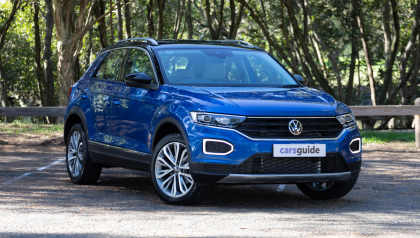Talk to anyone who knows things about cars and you'll find that the name Mazda pops up with some regularity when you ask about weird and/or wonderful vehicles. Its rotary-engined machines are the stuff of legend and seemingly every April there's a rumour of a new spinny-engined sports car from the Hiroshima-based brand.
In 2019, Mazda packed a few journalists into a plane and set them loose in a striking new car that was - and will be - Mazda's first EV, the surprisingly titled Mazda MX-30. The surprise bit was the use of the MX prefix, suggesting it was to be a sports car to join the legendary MX-5 and the long-forgotten MX-3, known here as the Eunos 30X. The word was it would be an EV, and a hybrid.
It has all the ingredients - bold styling choices, wacky doors (like the exciting RX-8) and a solid nod to sportiness with its low slung styling. Except that, in mild hybrid form, it has a fairly pedestrian 2.0-litre, which rather suggests that this compact... er two and two half-door coupe (we'll get to that) is built for the mean rather than fast streets.
Mazda MX-30 2021: G20E Astina Mhev
| Engine Type | Inline 4, 2.0L |
|---|---|
| Fuel Type | Unleaded Petrol/Electric |
| Fuel Efficiency | 6.4L/100km (combined) |
| Seating | 5 |
| Price From | $25,960 - $32,010 |
| Safety Rating |
|
Does it represent good value for the price? What features does it come with?
Mazda picked 2019 to take the brand upmarket with its brand new 3, and then the CX-30. When I first saw the price of this top-spec Astina I nearly broke a rib coughing, then remembered it was less than two grand above the equivalent CX-30, which itself isn't cheap, and to which this car bears more than a passing resemblance, at least in the engineering drawings.
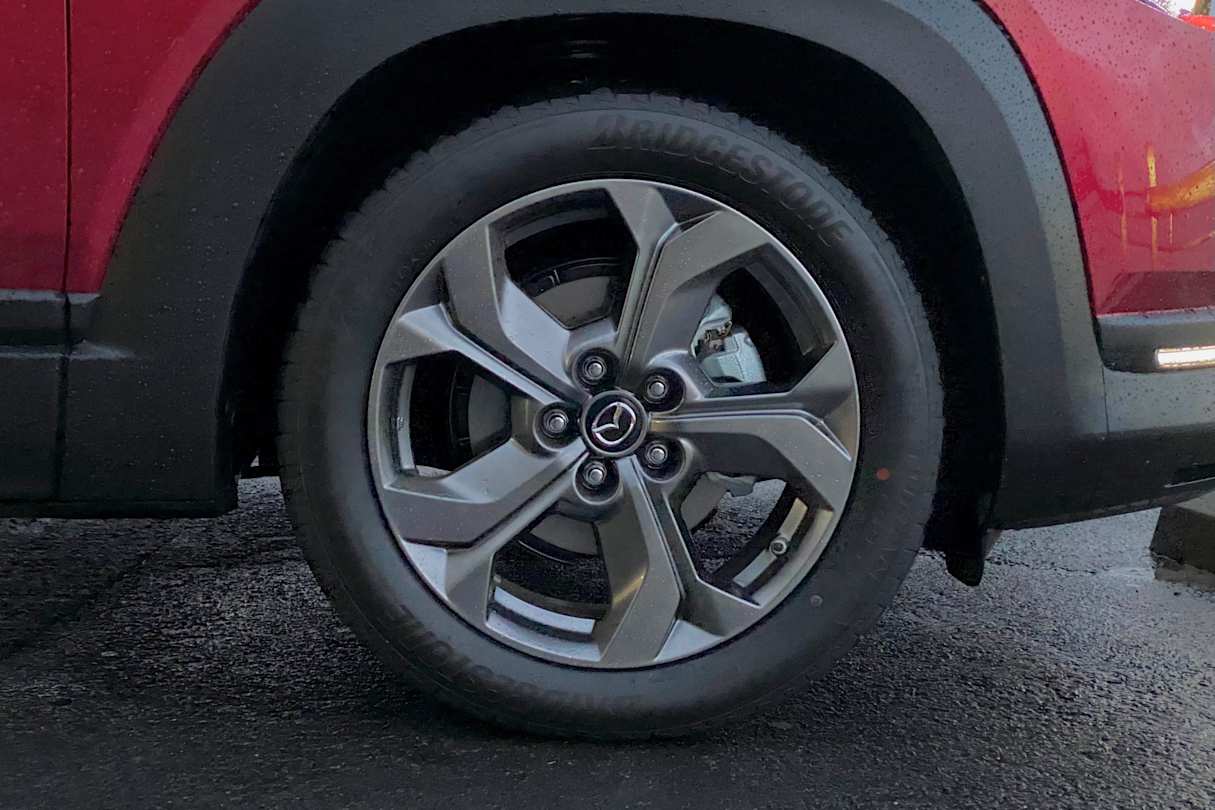
The MX-30 Astina's $40,990 before on-roads price includes 18-inch alloy wheels, a 12-speaker stereo, dual-zone climate control, front, side and reversing camera, keyless entry and start, front and rear parking sensors, active cruise control, powered driver's seat, sat nav, auto LED headlights with high beam shadowing, Maztex "vegan leather" trim (quote marks aren't sarcastic, this time), power windows and rear vision mirrors, auto wipers, sunroof, heated steering wheel and front seats, space-saver spare and a very solid safety package.
The 8.8-inch screen placed deliberately out of reach on top of the dashboard is powered by the newer version of MZD Connect, and it's a ripper. Controlled exclusively by the rotary dial on the console, it's slick, easy to use and has Apple CarPlay, Android Auto and DAB+ alongside some basic hybrid info and the sat nav.
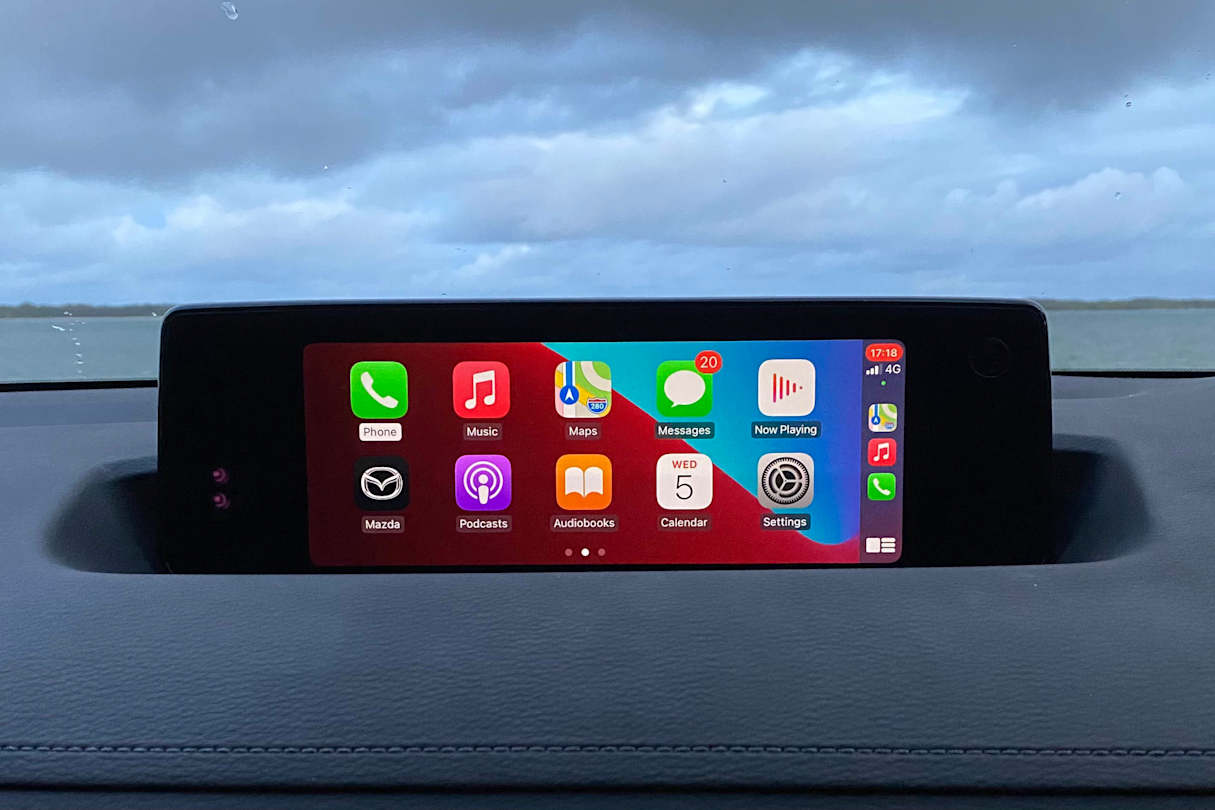
Your only options relate to paint - premium colours (such as Machine Grey and Polymetal Grey) attract a $495 charge, while three-tone paint is either $995 or $1490 depending on the base colour.
Is there anything interesting about its design?
Interesting isn't the word, it's an understatement. While it's not to everybody's tastes, it's an absolute cracker. I reckon someone at Mazda HQ brought in a BMW i3 and said, "Make this, but Mazda." That sounds bonkers, because they don't look the same, but bear with me.

The i3 shares the same door layout - big front doors and the two rearward-opening back doors, known these days as coach doors, or in Mazda parlance "freestyle" doors. You can only open them when the front doors are open and when you do, you get an unusual view into both the front and rear rows of seats.
In three-tone-paint spec, the strong profile looks even bolder, with the blacked-out cladding from the CX-30 butching things up a bit. Around the front, the usual massive Mazda grille is barely taller than the headlights framing it, with a smoother, EV look to the front rather than an air-hungry maw. The LED taillights are very Mazda and when you look at it in rear three-quarter view there's another BMW Group oddball echo; the Mini Paceman.
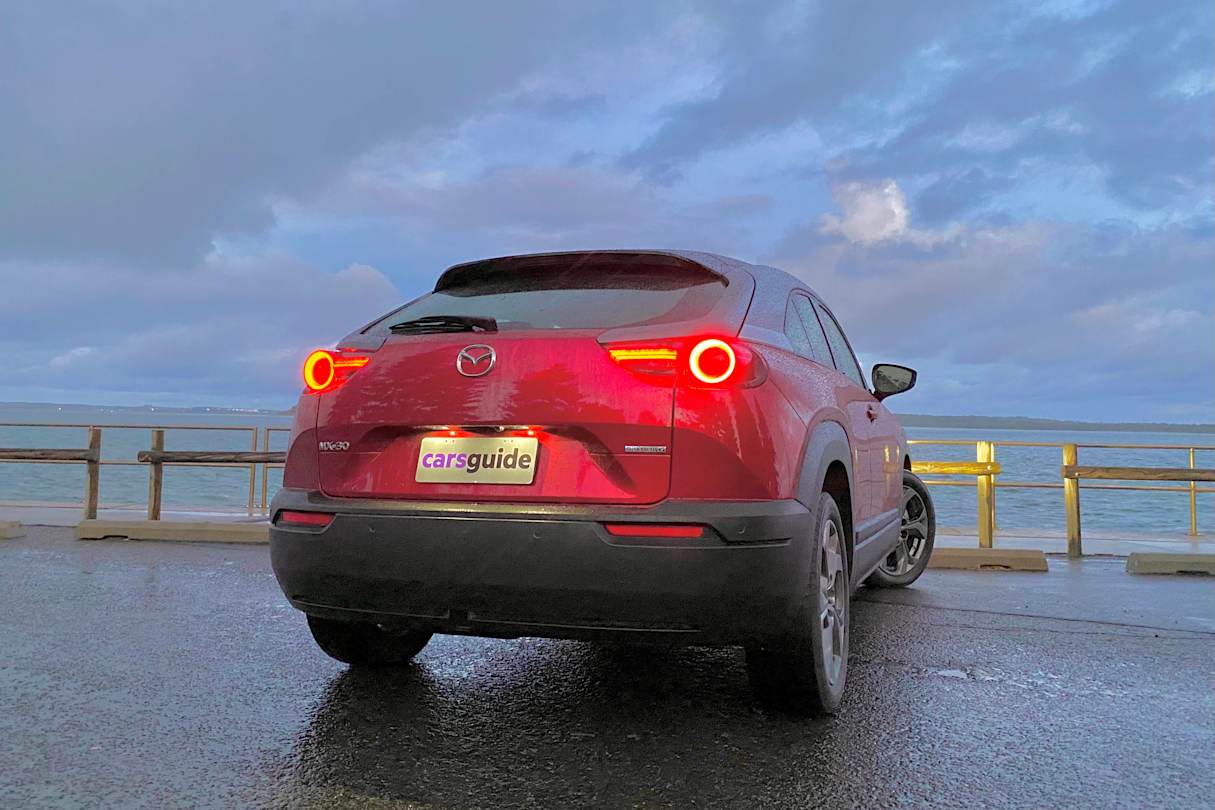
The BMW i3 ideology extends to the interior, but it's admittedly less obvious and more of a conceptual link. The MX-30 has the i3's recycled bits and pieces to make up door cards, and the vegan leather, but it doesn't have the the German car's stylish and shaped wooden plank across the dash. Instead, the console is clad in cork, a callback to Mazda's own heritage but, like the electric BMW's, a nice splash of sustainable organic material.
I could be over-thinking this, but I reckon it's quite the homage.
How practical is the space inside?
The cool shape does rather limit the passenger-carrying capability of the MX-30, but not terribly so. Not many Mazdas are famous for a luxurious rear seat, but this one has to contend with a slightly claustrophobic feel, brought on by the thick C-pillar and tiny windows in the truncated doors. I was a tight but comfortable fit behind my driving position (I'm just under 180cm), but I wouldn't want to spend a lot of time back here, even if it does have an armrest in which I can store two cups. There are no rear vents, though, and not much headroom.
Front-seat passengers also get two cupholders with charming little flip-up lids that are covered in cork, and when raised they also block the forward part of the small but useful centre-console bin. Under the console is a large storage tray, also lined with cork and featuring two USB-A ports and a 12v outlet. It's such a nice touch and it looks vastly better than it sounds.
The rear doors will hold small bottles while larger ones will fit in the front doors.
Boot space is a mere 311 litres, but Mazda isn't famous for lots of cargo area. If you fold the rear seats, the space increases to 876 litres.
What are the key stats for the engine and transmission?
As this is the advance party before the EV version arrives, this MX-30 features the M-Hybrid powertrain. M stands for mild and it is certainly that, with a 114kW/200Nm 2.0-litre four-cylinder hooked up to a six-speed automatic.
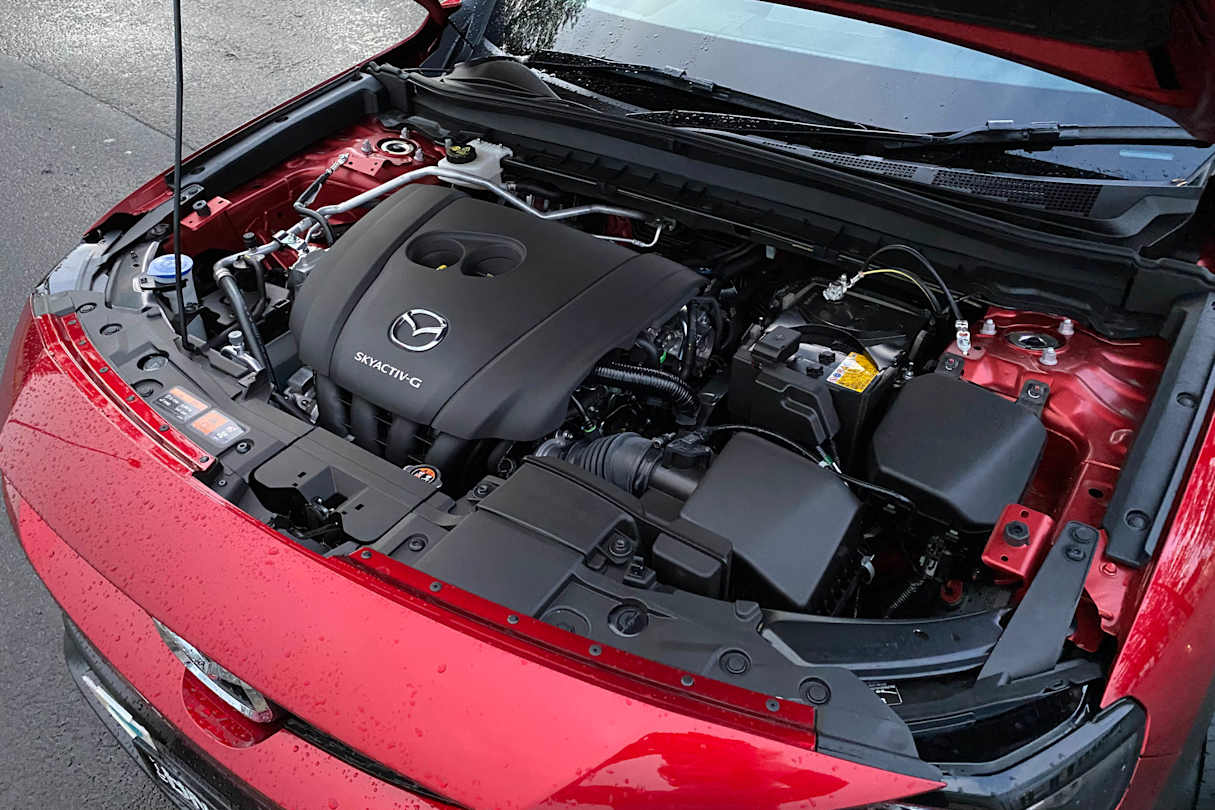
The hybrid bit is a 24-volt battery pack, which is powered by a belt-driven integrated starter generator (a small electric motor on the engine), which both recovers energy as well as deploying it in the form of a very modest torque boost, similar to Audi's belt-alternator starter system. The big battery means the MX-30's engine can cut out earlier and stay off for longer, even if you're running the air-con at the lights (or the kid's footy), which means less wasteful idling.
How much fuel does it consume?
Continuing with the mild theme, the 6.5L/100km combined cycle figure doesn't look outstanding but given I got an indicated 7.4L/100km in mostly suburban running, more careful operation might get quite close to that figure. It's not startling, and you certainly won't be rushing out to spend all this money to save a litre or two per hundred kilometres, but at least the official figures seem within reach.
Warranty & Safety Rating
What safety equipment is fitted? What safety rating?
The Astina gets the full complement of safety gear, which means a whopping 10 airbags, ABS, stability and traction controls, forward AEB with intersection assist, forward collision warning, reversing AEB, reverse cross-traffic alert, traffic-sign recognition, blind-spot monitoring and lane-keep assist.
The forward AEB works at both high and low speeds, as well as detecting cyclists and pedestrians
The kiddies are taken care of with three top-tether points and two ISOFIX anchors.
ANCAP awarded five stars to the MX-30 based on the lower spec models, which go without a few of the Astina's features.
What does it cost to own? What warranty is offered?
Mazda offers a five-year/unlimited-kilometre warranty, with five years of roadside assistance to go with it. This is now merely an average deal, with Kia leading the charge with a comprehensive seven-year warranty and Mitsubishi a caveat-laden 10-year warranty.
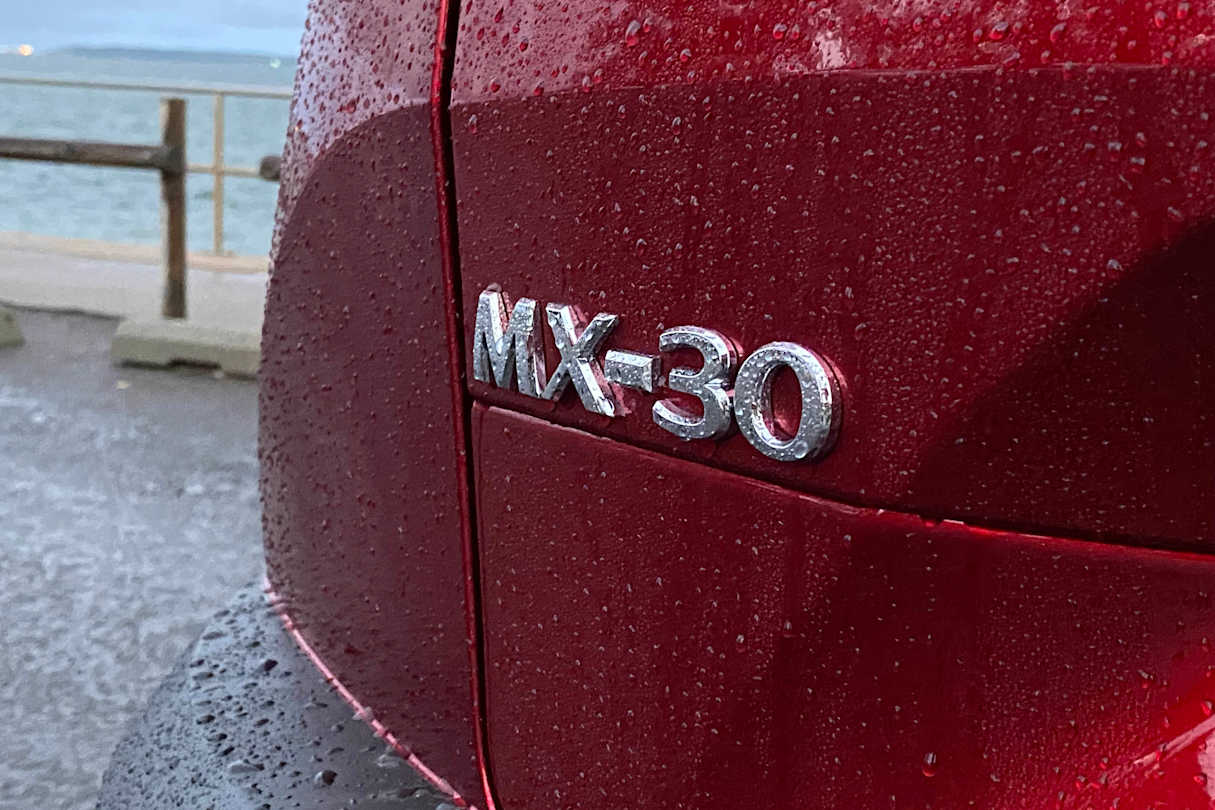
As with most Mazdas, the service intervals are short on mileage at 10,000km, or 12 months if you don't breach that number. The capped-price-servicing regime covers the first five services for $1942, or about $390 per service, more if you need brake fluid or various filters.
What's it like to drive around town?
Like it's CX-30 sibling, it's a fine car for urban use. The absolutely not sporty suspension manages suburban and urban roads with fine competence. The front can be a little crashy on the tougher stuff, but you hear it more than feel it.
The steering wheel feels big in the MX-30, yet it feels right for its purpose. There's an old-school feel to the thin-rim, but with the lovely soft faux-leather on it and the modest-sized airbag boss, it manages that dual-era thing that the rest of the interior does. The steering's weighting is just right, too, which is something Mazda is doing well these days.
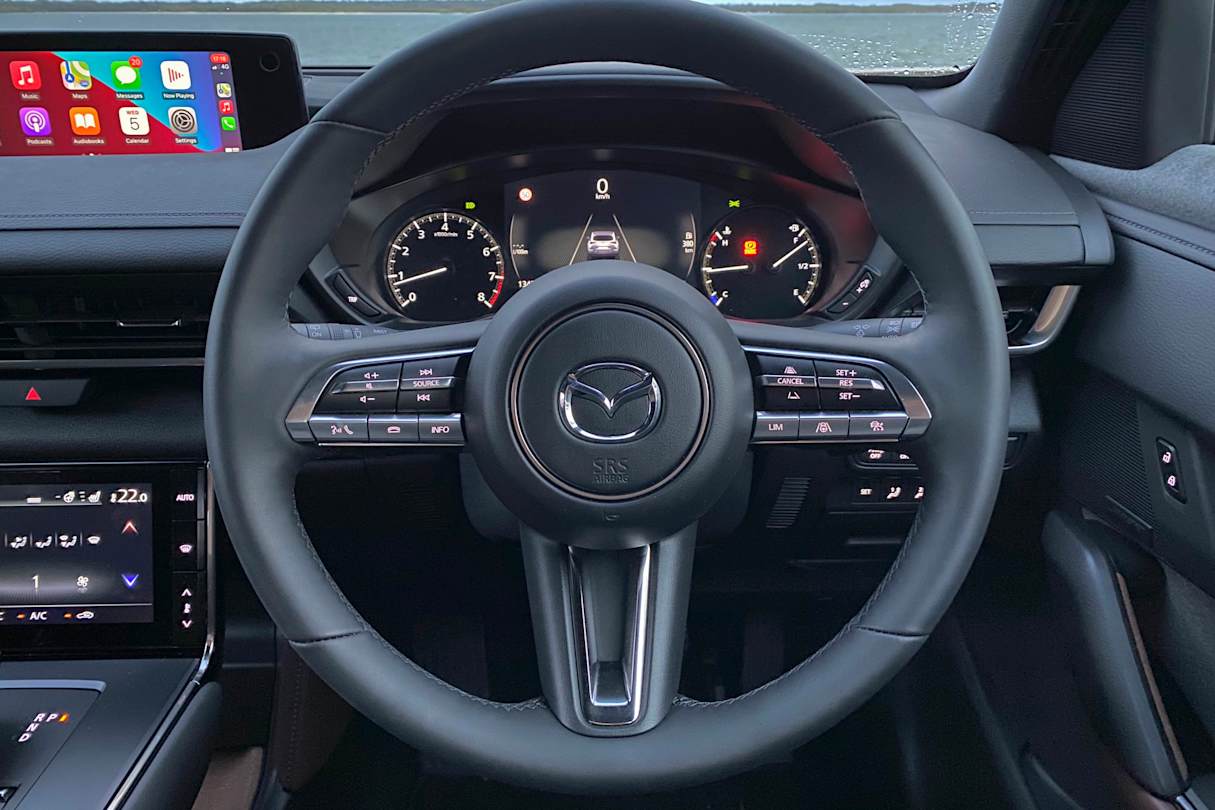
It's just a pity, then, that the 1500kg kerb weight makes mince meat of the 2.0-litre engine. I'm forever telling people not to buy the 2.0-litre CX-5 or CX-30 because they're quite slow, but at the moment, the 2.0-litre is your lot here. It does get a bit vocal under a full throttle and you do need to rev it a bit more than is polite. Loading up with people slows the car noticeably, as do reasonably steep hills.
But as I say, around town, as long as you're not planning to do battle with a hot hatch, you'll find it very agreeable. And given it's a bit on the slow side, you'll notice how many heads it turns.
Speaking of turning heads, there is a small problem - thankfully covered by the plethora of safety gear - and that's the over-the-shoulder vision. There isn't much of it. A head check for a lane change requires a bit of ocular precision to get a look through the tiny window in the rear doors, so if that makes you a bit nervous, the MX-30 might not be good for your blood pressure. As I say, the various lane-departure warning and blind-spot warning beeps and boops will help keep your sides clean.
Verdict
The MX-30 is that rare thing in modern motoring - weird. Mazda has always done weird and it's kind of damning when the Mazda3's thick C-pillar is seen not as a cool styling element but more of an inconvenience, when plenty of inconveniences have been sacrificed for style over the ages. It's not meant to be especially practical, instead it evokes the idea of a car as a statement. While this MX-30 is fairly conventional, it's a good visual preview of what's coming our way with the EV version.
Social call to action (formerly comment call to action): Does the MX-30 with a petrol engine tempt you? Or is it the EV version you lust after?
Pricing Guides





















.jpg)

.jpg)

















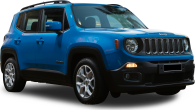






















.jpg)
.jpg)
